A kitten probably draws a lot from her mother. If a cat trusted and loved people, she will raise her offspring the same way, showing that these strange hairless giants can be trusted.
- Why do some cats purr and others do not?
- How to correct a cat’s temperament
- Take your time and you will be rewarded
- What to do if the cat is not affectionate
- A cat is ill
- Kitten grows up
- Why don’t all domestic cats like to be petted?
- Why doesn’t the cat sit in my arms?
- How to Train a Cat to Hands
- When your cat is an introvert
- You have power, you don’t need intelligence.
- ✔️ Security Breach
- ✔️ Overattention
- How can we show the cat that cuddling and petting are good and that he has nothing to fear?
- What causes such a reaction? Why does it happen?
- How to fix the problem
- Haste can ruin everything
Why do some cats purr and others do not?
Whether or not a cat will purr often and loudly depends on the cat’s breed, physiology and personality. If your cat has never purred, then there is no need to worry about it.
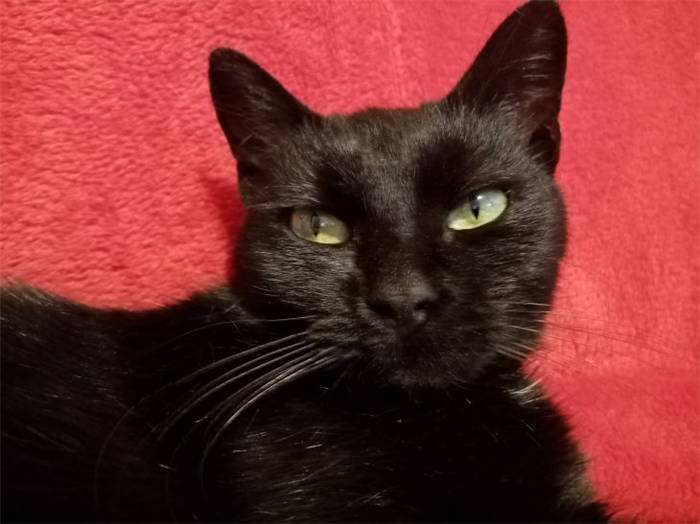
If your cat has always been happy to purr and then suddenly stops, it’s a serious cause for concern. There may be a problem with the cat’s vocal cords or even brain activity. In this case, it’s worth showing the pet to the vet.
How to correct a cat’s temperament
You can accept the fact that the cat doesn’t like to be stroked. Or you can try to be patient and teach her to accept petting. Try to make the cat trust you. But this can only be achieved with kind words and a calm tone. A loud word can scare away the pet. But a kind word will attract him to his beloved owner.
Start by accustoming your furry friend to be around when you sit on the couch. This will help a favorite treat, which give the cat every time he came to you and lay down next to you. So gradually she will get used to it.
At the same time you can try to give food from your hands. If the cat is timid or wild this will not happen right away. Start by simply moving the bowl of food towards you. If the cat categorically refuses to approach it in your presence, do not insist. Repeat a little later.
Gradually the pet will trust you and then you can begin to accustom the cat to accept naturally when stroked. Here, too, there is no need to hurry. At first single stroking is enough. Accustom the animal not to hurry. Remember that scaring will be easy and you will have to go back to the very beginning.
Don’t insist if the cat wants to leave, don’t try to hold him in your arms. But if he likes your caresses, don’t overdo it and thank him with a tidbit. At first he’ll take petting for granted, but then he’ll get used to it and become more affectionate.
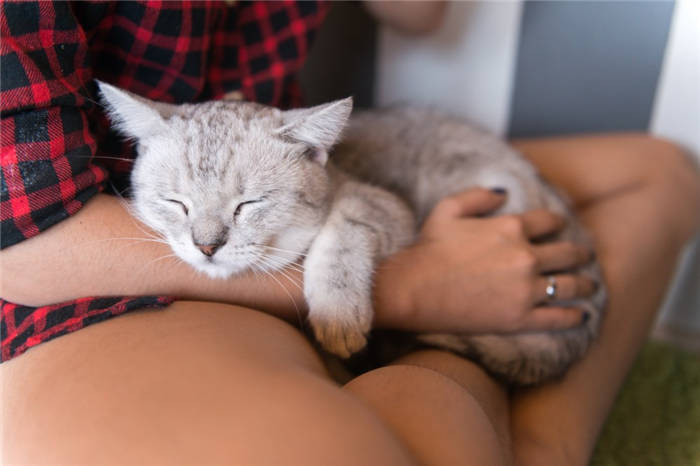
Take your time and you will be rewarded
There is no need to dwell on why the cat does not like to be petted. This can be fixed. What you need for this?
- Patience. Do not rush your cat.
- Persistence. Methodically and daily repeat training, and the cat will accept that he is being stroked, naturally.
- Equanimity. Negative emotions can frighten the cat and spoil the relationship between him and his human for good. Not all cats are naturally affectionate and tame.
- Kind words and calm intonation. Do not let go of negative emotions in the presence of the cat. This is the kind of animal that values comfort and tranquility.
Even a naturally feral cat can become more affectionate and love to be stroked. But it only depends on the loving owner and his care. If the cat will feel that it is given enough freedom and that it is loved and respected, it will respond in kind.
What to do if the cat is not affectionate
All animals have their own unique character, some are sociable, others are unsociable. Why is a cat not affectionate? It may be due to stress or illness, distrust of humans in general, or fear of the owner. Cats can be unkind from birth. There are animals that do not need human contact, they shun unnecessary attention and show aggression when their personal space is violated. But if a cat that has always been affectionate suddenly starts letting its claws out or stops paying attention to its owner, you should look for the reason for such behavior.
If a previously affectionate cat has stopped coming into contact with her owner or has become aggressive, something is probably bothering her. The most common causes of behavioral changes:
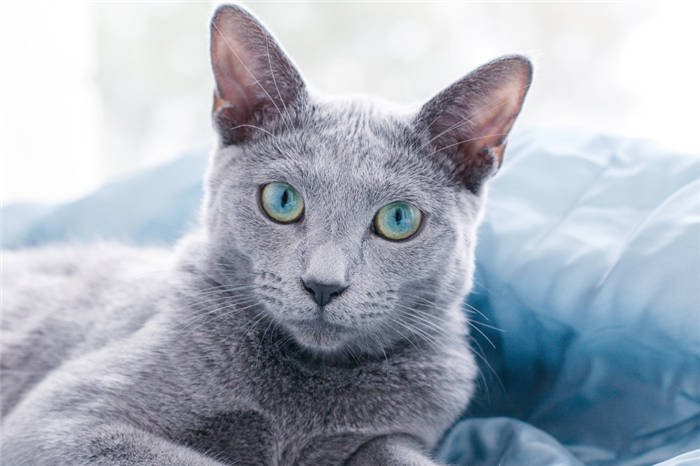
If you properly understand the cause and eliminate it, the cat will become habitually affectionate.
A cat is ill
Poor health greatly affects the character of the pet. An ill cat that was affectionate yesterday may today hide from its owner or even attack him. This behavior indicates that something is bothering the cat.
Take the cat to the veterinarian. After examining and testing the cat he will be able to determine whether the cat is healthy and, if necessary, prescribe a treatment. Follow all the recommendations, and your pet will quickly go on the mend. After a full recovery the pet will be the same as it was before the illness.
Kitten grows up
A kitten grows up and under the influence of hormones his character begins to change. Tags appear in the house, the animal may even try to escape in search of a member of the opposite sex. Often the cat becomes aggressive and may scratch or bite the owner. The behavior does not depend on whether the animal is let outside or not. Some owners believe that if you take the cat to mating, he will become calmer, but this is fundamentally wrong, the situation will only worsen.
Why don’t all domestic cats like to be petted?
Some animals are simply not accustomed, and at the first opportunity they run away, break away, or get clamped already in the hands. Also, trust in a particular person plays a big role. My mother’s cat was always friendly and eagerly climbed into the arms, apparently, understanding that she rescued him from the street and came out. To me he got used only years later, but now with pleasure lies in his arms, loves when I pet.
I know for a fact that a British shorthair cat does not like to sit in your arms and does not like to be stroked. She hardly tolerates it, sometimes she bites it.
If I had known these peculiarities before, I probably would have gotten a different breed of cat.
It’s interesting, always sits next to me, looks at me, walks on my heels, but don’t touch.
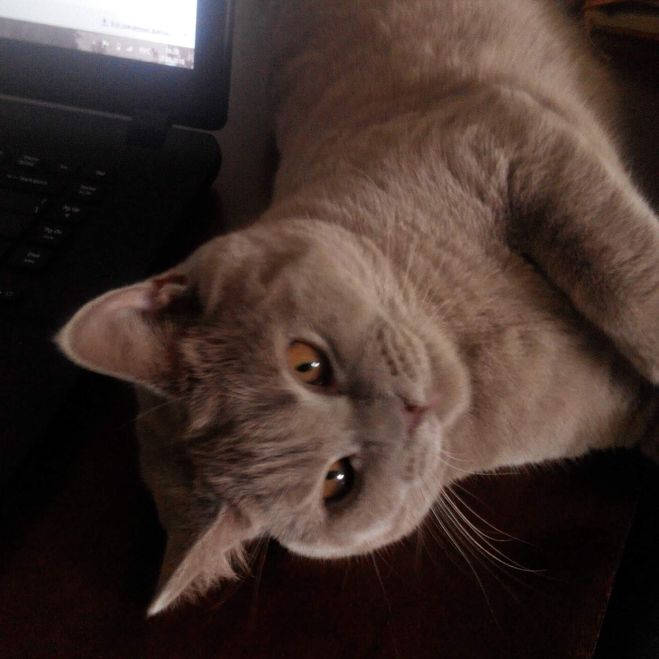
Cats and cats … they’re like people, with their character, moods, even horoscope, and they also have a heredity, but if it is a breed and a known mom and dad, outdoor cats are unpredictable, but the main thing to love and understand them.15 years ago, my daughter was given a kitten, thought the kitty, named Marquis, was the Marquis, really “as you name the boat. “Until now, this proud old man can go to his arms, only when he decides for himself and to pet him, you can only with the permission of HIS HIGH Lordship Markiz, here you have a pedigree cat, and the kitten this summer, the granddaughter brought from the street, crying, persuaded him, so this kitty is ready to tie a knot, if only it petted. Perhaps the cats, they are more serious, and the cats softer temperament, that’s the difference.
Why doesn’t the cat sit in my arms?
Petting and holding your pet on the lap is the dream of every owner. But why doesn’t the cat sit in your arms in response to petting, and even scratches, bites and growls unhappily? Here are the main reasons for this behavior and ways to tame the animal and make it gentle and affectionate.
Cats are freedom-loving and self-sufficient animals. Professional trainers know that it is almost impossible to make them do something against their will, even to make a cat sit in your arms. Cats differ in character from each other, just like people. Some are more affectionate, patient, friendly and able to purr on the lap of the owner for a long time, others are strict and independent, not letting themselves be petted. British short-haired and lop-eared cats are particularly prone to this. Often the cat chooses his own place in the apartment, and if he doesn’t want to sit in your arms, you can’t do anything, but sometimes he can be tamed.
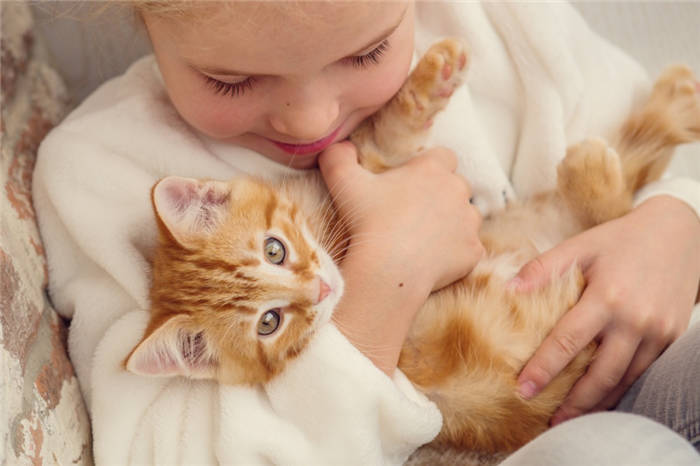
Here are the main reasons why a cat won’t sit in its owner’s arms:
- A kitten is constantly on the move. If his attention is distracted by something, he will not sit in his arms;
- A pungent smell from the owner. The cat’s nose is very sensitive and does not like the smell of lemon, orange, alcohol, spices, laundry detergent, creams and perfume;
- Memories of past wrongs. If the previous owner beat the kitten, hurt him, or if the cat grew up on the street and is not used to tenderness, he may not give in and not go to his arms. The cat will not sit in the arms of the person who abused it;
- Some animals are so independent that they don’t like anyone to start picking them up, even their beloved owner. They begin to hiss and bite back, expressing their displeasure;
- A cat doesn’t like to sit on his lap because he is afraid of heights and losing his balance;
- The cat does not like to sit on other people’s arms. He can only perceive and love his owner, but not his family members;
- The street cat does not like to sit on his lap, as he is unfamiliar with tenderness and affection. Over time, he begins to shun any display of affection;
- Pedigree animal. British and lop-eared cats do not like to go to the hands, remaining self-sufficient and independent;
- Fear. If an animal is frightened, it will not be affectionate even with its owner. Cats cannot tolerate harsh noises, screams, can be frightened of them and in this state it is difficult to even pet them;
- The cat does not like to sit in the hands of children, as they squeeze it and hurt it. Even if the child has grown up and no longer does so, the cat remembers the offense and no longer asks to be held by him.
How to Train a Cat to Hands
You should gradually tame the cat to your hands. The younger the cat, the easier it is. If the kitten responds to petting, as soon as he starts to worry and tail smacking you should immediately let him go. This is a signal that he is tired of this and that he has a lot of urgent things to do. If he responds to petting, you can use the following techniques
- Do not pick up a cat if you smell alcohol, citrus or perfume. All cats don’t like harsh smells and will never sit on your lap if they smell too much;
- You can get his attention with some tasty food. Cats react instantly to edible smells and will jump into your arms if they see that something tasty is in store for them;
- An affectionate kitten will gladly sit in your arms if you play with him. If a cat gets fussy, get its attention with food or food.
- A cat does not like to be grabbed and therefore will not sit in your arms. Avoid sudden movements and do not try to hold her by force – she will remember this;
- If the cat is afraid of heights, you should take her with one hand under her armpits and support her hind legs with the other. She will not feel weightless and frightened;
- Another reason why a cat does not like to sit in his arms is sudden movements and pinching. A cat can sit quietly on your lap when he is not being petted. Therefore, it is better to pet him gently, but not to cuddle him;
- Another way to make a cat sit in your arms is to put Valerian or another feline aphrodisiac on your hands. But this method does not work if the cat is less than a year old;
- Do not drive the cat away if he wants to jump on your lap, even if you have no time. If you pet it and then chase it away, it will be hard to get affection from it;
- Teach children to be careful with the animal, especially an adult. A cat may be afraid of children and not sit on their laps;
- Handling should be even and friendly. A cat will sit with an owner who does not shout, is quiet and is not an angry person. A cat does not like to sit in the arms of aggressive individuals, especially males.
When your cat is an introvert
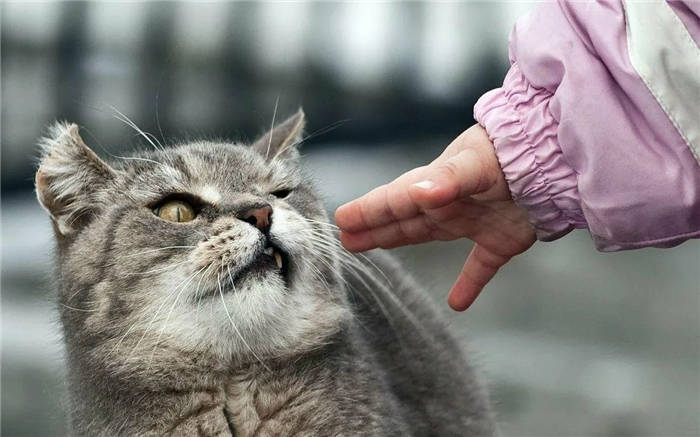
Not all people are disposed to noisy parties and constant guests. Some people just like to relax on a quiet evening, read a book or watch a TV series.
It’s the same with cats. There are some that do not want to invade personal space, and if they want to communicate with a person, they come on their own.
Some cats just can’t bear encroachments on their coats, and some of them can stand up for themselves and clearly explain to the tactless owner what to the point.
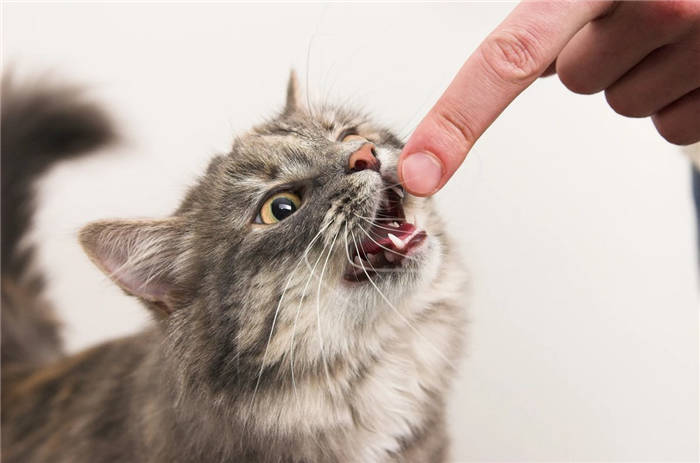
Cats are especially infuriated when they are given into strange hands “to hold”. Then they consider this action as betrayal.
Poor cats at exhibitions, not each of them would dream of being examined, groped and evaluated by strange eyes and hands.
You have power, you don’t need intelligence.
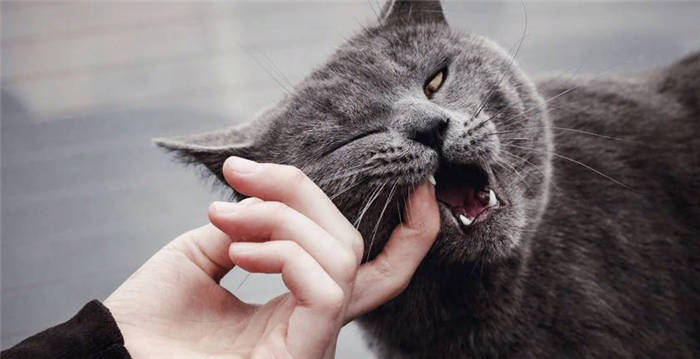
Once I was asked: why, when the owner petting a cat, the cat purrs and stretches, and if the husband – the cat runs away or grabs his claws on the hand?
Because it’s all about the hand and the force that is applied when petting a cat.
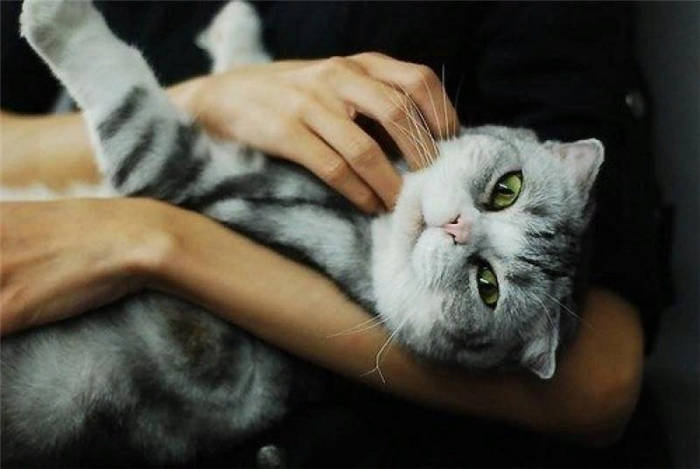
If you overdo it a little, then petting turns into the status of torture for the animal, which is the same if instead of a classic soothing massage with gentle female hands you will be “squeezed” by a sumo wrestler.
And then there are the special forbidden areas that not every cat will let you touch:
– stomach;
– paws;
– the tail and the area under it;
– the middle part of the back;
– groin areas.
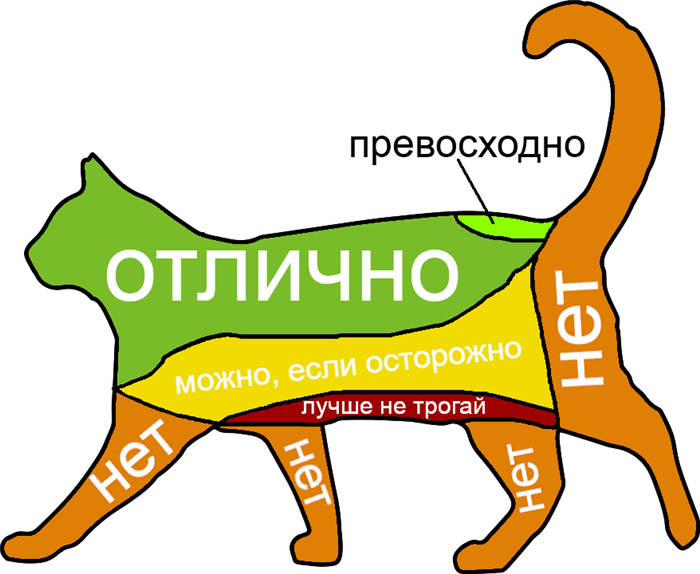
It is best to pay attention to the cheeks, head, chin and neck of the cat, the pelvic area closer to the base of the tail.
It’s not really the cat that’s not affectionate, it’s just that the person doesn’t know her much and doesn’t understand the pet.
Hopefully, after reading this article, you will look at your cat differently.
✔️ Security Breach
There are some people who like to cuddle their cats a lot and are constantly trying to show how much they love their cats. But the thing is, strong hugs and petting of such an intrusive nature can instinctively compromise the cats’ safety, and no matter how much your cats love you, they will resist it and run away.
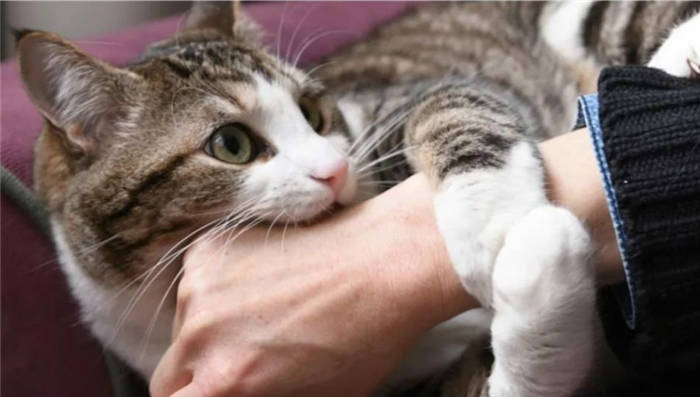
✔️ Overattention
There is no doubt that cats also love to cuddle and cuddle with their beloved owners, but if it happens too often and too intrusively, then – it saves cats an overabundance of attention and love, and cats get tired of it. As noted above, our love and attention should be in moderation.
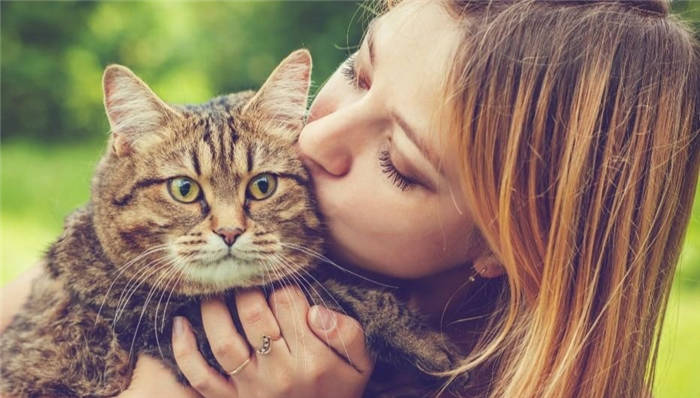
How can we show the cat that cuddling and petting are good and that he has nothing to fear?
We have prepared for you some tips to help build a more trusting relationship between you:
- Make sure the cat sits across from you and meanwhile put her favorite treats or catnip on your lap. Don’t force or coerce her to sit in your arms right away, wait until she shows interest.
- If the cat is already sitting in your arms, reinforce the result by giving it treats. Try to create positive associations.
- When the cat finally gives in and sits down on your lap, try to control your impulse of love, as it may scare the animal away. Be calm and gently pet your pet.
Yes, it will be quite a long process, but it will be worth it! Don’t feel bad if you can’t get what you want, since some cats are used to showing their affection in other ways, and there’s nothing wrong with that!
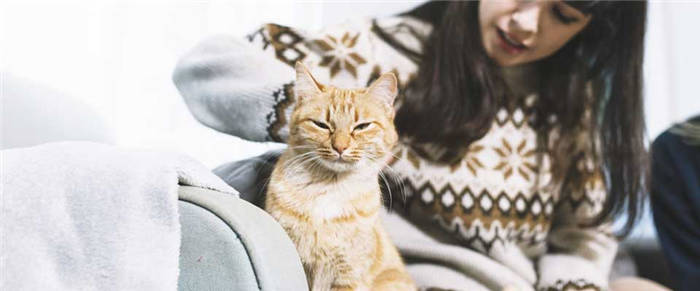
What causes such a reaction? Why does it happen?
According to experts, much depends on the nature of your pet. For example, some breeds need a bit more privacy than others, and often they don’t need physical contact with their owner or family members at all.
If you have a British cat living at home, you are more than likely to have noticed that it is not interested in unnecessary attention to its person. However, if the pet loves its owner very much, then it is ready to do him a small favor and tolerate when he takes him in his arms, but at the first opportunity he will try to leave his “embrace”.
Try to do without physical contact and cats of Norwegian breed – they prefer to show their love for the owner in other way, although they look very affectionate at first sight.
Therefore we recommend you to get acquainted with the peculiarities of this or that breed before buying a new member of the family.
Sometimes even the most affectionate cats avoid cuddling with their owner. As a rule, this is due to the negative experience of such communication with a person, which your pet has experienced before. For example, it may have been hurt or dropped (even if not on purpose and without malice), but the cat or cat is unlikely to want to repeat the procedure again.
It happens that a cat may refuse to be petted if it does not trust a human, because it is difficult to control the situation and direct the process in your hands.
How to fix the problem
Trust, especially from a pet, is not so easy to earn. It takes a lot of time, patience, and spent nerves. But the result is worth it.
The first step is to accustom the pet to calmly stay close to the owner. Contact should be made with a yummy treat prepared in advance. This will begin the process of adaptation.
You should feed the pet from your hands. If the cat refuses, you should slowly move the bowl as close to you as possible. Have you had a categorical refusal? Try again, but after a while.
Trust will form slowly, but its rudiments will appear in the next few days. Only then can you start trying to pet the fur. There is no hurry! At first single strokes will be enough. Haste is the main enemy in this matter. You can simply scare the animal, going back to the beginning of the relationship.
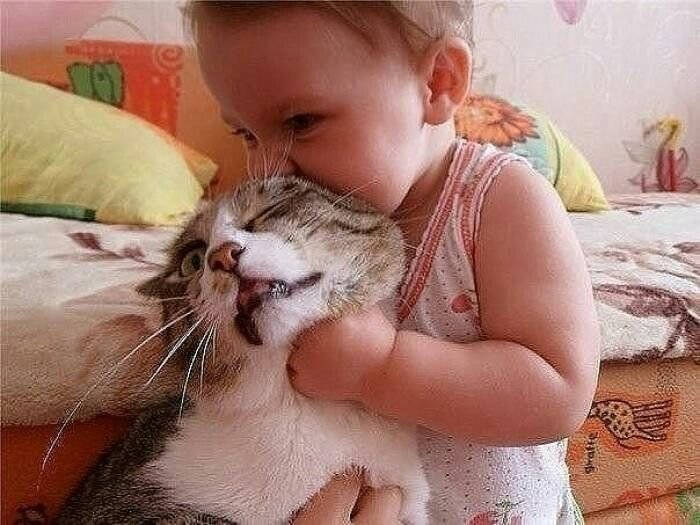
Has the pet expressed a desire to leave? There is no need to hold him by force. A cat is a free-loving animal, and affection is only needed when there is a desire to do so.
Haste can ruin everything
Any problem can be solved. With time the cat will accept the fact that he is being petted, and perhaps he will begin to make contact.
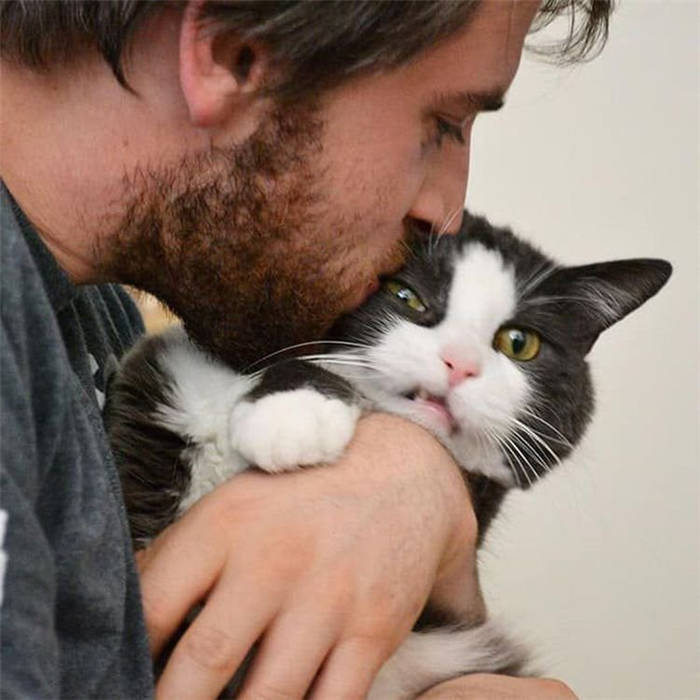
– Showing restraint, or being annoyed or nervous will scare the cat away;
– Talk calmly, with kindly tones that allow the cat to relax.
Even wild animals love affection, but are not always willing to trust humans. Care and proper attitude can break the “ice wall”. The main thing is to do everything gradually, without rushing, to give the cat so much needed freedom of choice.
Thank you for reading to the end) Subscribe to the channel and leave your likes and comments!






